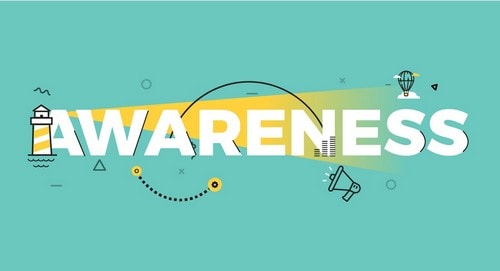Table of Contents
What is the Buyer Readiness State?
Buyer readiness is a particular state which denotes the willingness or the preparedness of any individual customer for buying a specific product and service.
Whenever a customer purchases something, it is not an instantaneous decision. There is a whole set of different stages through which a customer goes before buying any particular product.
Thus these various stages through which a customer goes through before making his final purchase are known as the different stages of the buyer readiness.
Now the need for bringing out this concept was that it could help a lot of people in the marketing industry to formulate a proper approach so that they can sell a maximum of their product.
By evaluating how the customers would react to a particular product at different levels, helps the companies to build a strategy in such a way that they can use it for their benefits. This would not help them generate more sales revenues but also increase their profitability.
Thus for any company to launch their product in the market, it is essential that they do the proper advertisement for that product. This way more and more people can get aware of the existence of the product.
Then these customers started going through several states until they finally decide to bit that particular producer or service. When the marketing industry is taken into consideration, one just can’t put enough emphasis on how relevant the advertising is.
To approach it in the right way is essential. Now several factors together form a marketing strategy. And there are also specific and in fact, many aspects that should be taken into consideration before planning a proper marketing strategy.
Also, the customer plays the most vital role in the success of any particular business. If they buy the products only then can the sales revenue, and the growth of any company will rise high.
If these customers are not motivated enough, then they may never buy the products. So it is existence for any company to understand its customers and how their psychology works when it comes to purchasing a particular product.
Thus taking the aspect of business and marketing into consideration, one can divide the buyer’s readiness in two different stages, mainly being six. All of these stages are grouped by how the customers behave which majorly depends on the psychological behavior of the customer.
Now when the companies or any business entity launched the product they make sure that it is advertised in a way that it encourages the maximum number of customers into buying that product. So, by segmenting the demographics of these customers on the basis of which stage they are, the companies are able to formulate separate strategies for all of the different stages. And this way they are able to maximize their sales avenue.
Stages of Buyer Readiness
Now whenever a customer purchases something, it is not an instantaneous decision. There is a whole set of different stages through which a customer goes before buying any particular product.
Thus these various stages through which customers go through before making his final purchase are known as the different stages of the buyer readiness. Now in the context of the business and the marketing industry, there usually are six different stages through a customs goes through before he or she finally make that purchase.
These stages are generally considered to be categories on the basis of psychological behavior rather than just the facts and the figures. These categories thus depict the thought process of the customers and how he finally gets convinced enough to buy that product finally.
Now those six stages are
- Awareness of the existence of the product
- Knowledge related to the benefits of the particular product
- Initial factors of the interest of the customer in that product
- A preference that is given to that particular product over the others in the competitive market
- Conviction of that specific product in terms of its suitability and also its purchasing power
- Purchasing the product
1. Awareness
In this stage, the customer is able to get a vivid idea of the product or comes to know about the existence of a certain kind of a product for the first time. Here the customer has a rough idea of what the product is. And it is the job of the business to make sure that their customers are aware of the product they are going to launch in the market or have already launched it.
Here they have to target the maximum number of potential customers.
2. Knowledge
In this stage, the customer is now aware of the product; the thing that lacks here is the knowledge of the product. Here the advertisement is done in such a way that the targeted group gets more and more information about the product.
The marketing department should focus on the ways in which they can reach to the maximum number of people and let them know about the several features that their product haste offer and how it helps half of them out.
3. Liking
This is the stage where the customer is not just aware of the products but also acquire a sufficient amount of knowledge about it. And the customers that belong to this stage are starting to relate to that product.
This stage is where the customers begin to get inclined towards the product slowly. So here the marketing campaigns main job is to understand the ideas and the feeling of the customers so that they can bring them out through their product.
4. Preference
This is the stage where the consumer becomes well aware of the product and chooses to prefer it over all the other products. Here the primary job of the marketer to understand the preference list of the buyer as to how much are they willing to purchase the product and then these companies to bring their product on the top of the preference list of the buyer.
5. Conviction
This is that stage where the companies should give some powerful reason to the customer so that they will become willing to buy that product. The customer needs to believe that the product is beneficial for them and they should buy it.
6. Purchase
This is the final stage in which the customer final builds up his confidence enough and gets a strong enough reason which gives him the encouragement t finally buy the product.
What is the importance of the Buyer’s Readiness?
The importance of each of these stages is that they help the companies in knowing the thinking and the psychology of their targeted customers and hence advertise their product different to people who belong to the various stages of the buyer readiness stages. Also by segmenting people on the basis of their willingness to buy their products, they will be able to advertise their product focusing on the demands and the needs of such people.
In this way they, the buyer’s readiness stages will help them in encouraging their customers into buying the product they think they will need and hence both the two parties the buyers and the sellers get benefited from this. The evaluation of the buyer readiness stages if essential for the business and the marketing industry.
Where is this Concept Used?
The buyer readiness stages are very useful when it comes to the business and marketing sector. It helps them in segmenting their targeted customers on the basis of the level that they are presently in. Then they use these stages to formulate a clever marketing strategy.
The main aim of this marketing strategy will be to help design an advertising plan in such a way that it will target the customers depending on the stage that they are currently in. So, if they are in the initial stages of being aware of the product, they will be approached in a different way.
If they are in the stage where they can compare that product to the product of other competitors, they will approach in a similar way. If they are in the final state where they are almost ready to make the purchase, they will be approached differently. Also, it helps the companies in determining the type of promotional message they should be using so that the customers will be willing enough to buy the product.
In this way, the buyer readiness stages help a lot when it comes to selling a product by a particular entity (business/ company). And due to the same, the marketing campaign can function well.
Liked this post? Check out the complete series on Consumer Behavior

